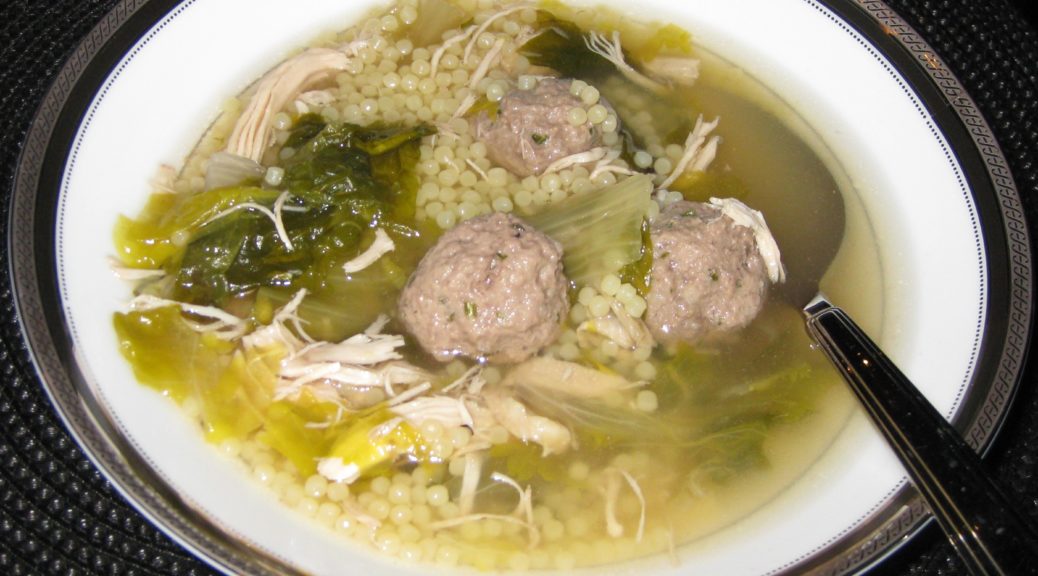February 5, 2018
Growing up I never really understood why this was called Wedding Soup. It was NEVER served at weddings.
It was mostly served at home, unceremoniously.
The fact that it was unceremonious is a shame. It is a wonderful soup and, being honest, takes a bit of work to pull together. Both the soup, and the soup-maker, in my estimation, deserve a bit of attention.
Although it takes some work, it doesn’t require much in the way of heard-earned skills like frosting a cake or making pie crust. It’s just a bit of slogging through a series of steps.
This is a beloved soup among Americans of Italian descent. Interestingly, my in-laws who are actually from Italy had never heard of it until I made it for this blog!
Click HERE to join our mailing list and you’ll never miss a recipe again!
But back to the “wedding” part. I did a bit of internet research (thanks Google!). Actually, I hesitate to call it “research.” I’m old school. I remember when doing research meant hours upon hours spent in libraries looking at actual hardcopy materials. It almost doesn’t seem fair to sit on my sofa with my laptop and read materials served up by Google based on natural language questions and call it research.
The “natural language” part is interesting too. In the “old” days, if you found an article that was relevant to the research topic, you would look at the articles referenced by the author and find, potentially, other relevant articles. But they would all be older than the first article. This is where the “Science Citation Index” came into play.
The Index was a series of periodically published volumes that listed all the articles that cited a particular article in their bibliography. With the Science Citation Index, you could start with a relevant article and then work forwards finding all the newer articles that had cited that article.
Now I just tell Google what I’m interested in and I get a bunch of (almost always) relevant “hits!” Google is even nice enough to tell me how many hits there are and what fraction of a second it took Google to identify them.
Even when I’m researching a biomedical topic I sit on my sofa with my laptop and search the National Library of Medicine. The search language is a bit more arcane than the natural language used by Google but it still feels like cheating compared to slogging around a library. I can even have the full article delivered to my laptop so I don’t have to figure out what library has the publication I need.
Follow us on your social media platform of choice
So, what did I learn from my Google search?
It appears (at least it’s a plausible theory) that Wedding Soup is an inaccurate translation of Minestra Maritata or Married Soup; apparently so-named because of the way the different ingredients marry together so well.
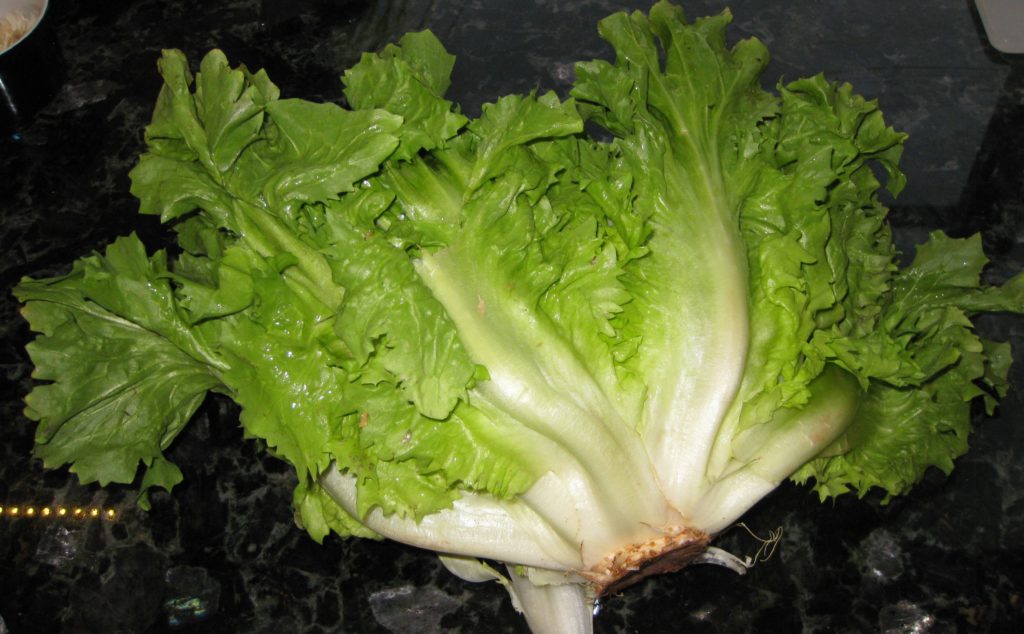
Interestingly, my husband’s Tuscan grandmother would use up small amounts of different types of dried pasta, perhaps putting them into a soup or serving them with a simple sauce. She referred to this as Pasta Maritata because she was marrying the different types of pasta to create a dish.
If this theory is correct, I am perplexed by the inaccurate translation but, be that as it may, the soup is wonderful. I urge you to give it a try.
I like breaking up the work over two days, especially since I like to make a long-simmered broth as the base of the soup. My mother didn’t do this. Once the chicken was cooked, it was removed and shredded and the broth was used without additional simmering to make the soup. It shaves about 3 hours off of the prep time. But, since making broth is mostly hands off, and the improvement in flavor is dramatic, I simmer everything a bit longer before straining and discarding the solids.
If you have a favorite family recipe and a bit of a story to tell, please email me at santafecook@villasentieri.com and we can discuss including it in the blog. I am expanding the scope of my blog to include traditional recipes from around the country and around the world. If you haven’t seen Bertha’s Flan or Melinda’s Drunken Prunes, take a look. They will give you an idea of what I’m looking for.
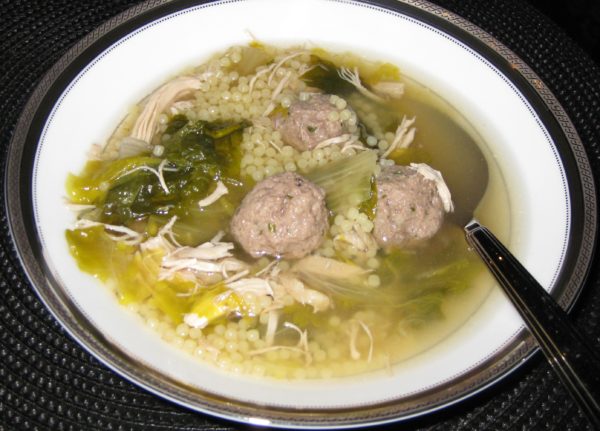
| Prep Time | 1 hour |
| Cook Time | 5 hours |
| Passive Time | 2 hours |
| Servings |
people
|
- 1 x 4 1/2 pound whole chicken
- 2 carrots chopped
- 2 stalks celery chopped
- 1 onion sliced
- 3 cloves garlic chopped
- 4-5 leaves sprigs parsley and tender stems only
- 1/2 cup white wine
- 1 tablespoon tomato paste
- 1 whole clove optional
- 1 bay leaf
- 1 piece Parmesan cheese rind optional
- 1/2 teaspoon black peppercorns
- 1 tablespoon salt
- 5 quarts water
- 1 pound ground sirloin 90% lean
- 1 egg
- 3 tablespoons Parmigiano Reggiano cheese freshly grated
- 1 clove garlic minced
- 1/4 cup parsley minced
- 1 1/4 teaspoons salt
- 1/2 teaspoon black pepper freshly ground
- 5 slices Italian bread 2-3 days old
- 1 large head escarole
- 1 pound acini de pepe or other very small dry pasta
- salt to taste
- black pepper freshly ground to taste
- Parmigiano Reggiano cheese freshly grated for serving
Ingredients
Broth and Chicken
Meatballs
Final assembly
|

|
- Cut the chicken into breast halves, legs, thighs, and wings. Cut the back into 2 or three pieces. Reserve the liver for another use but chop the remaining giblets.
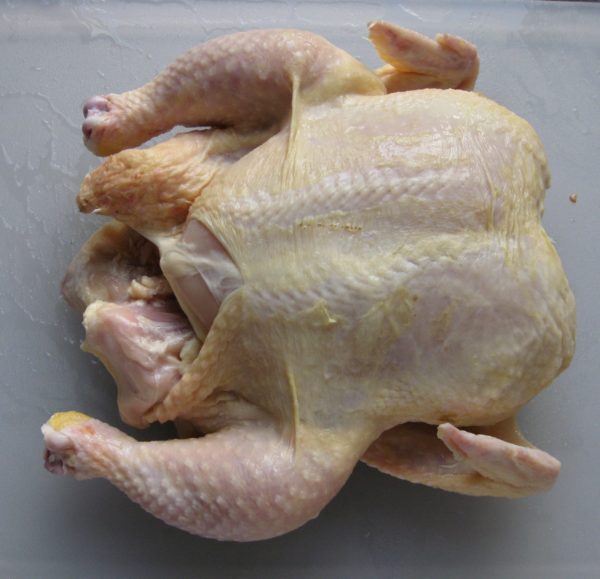
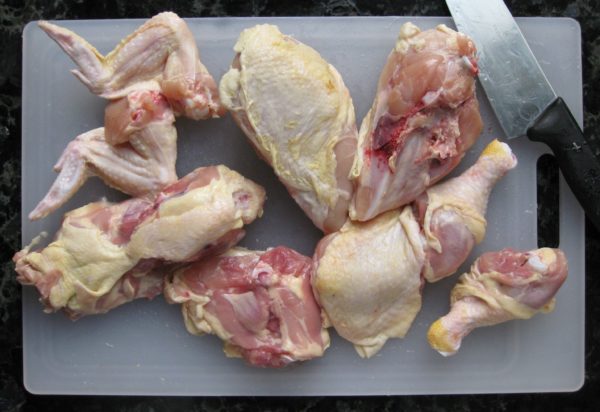
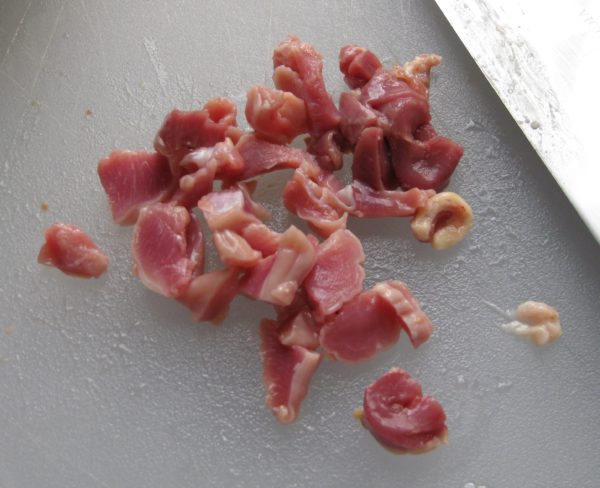
- Slice the onions. There's really no need to peel them first.
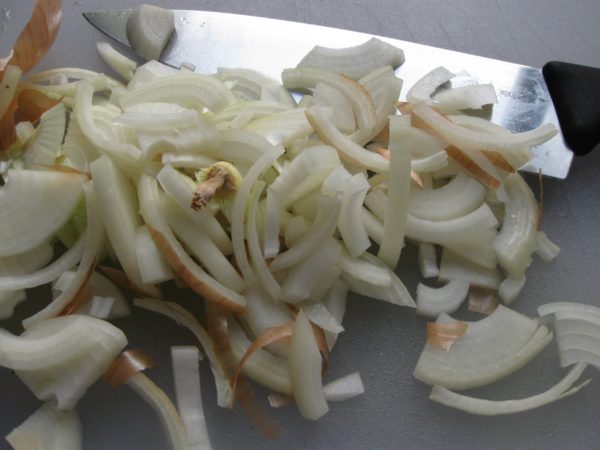
- Same with the garlic, no need to peel. It all gets strained out in the end.
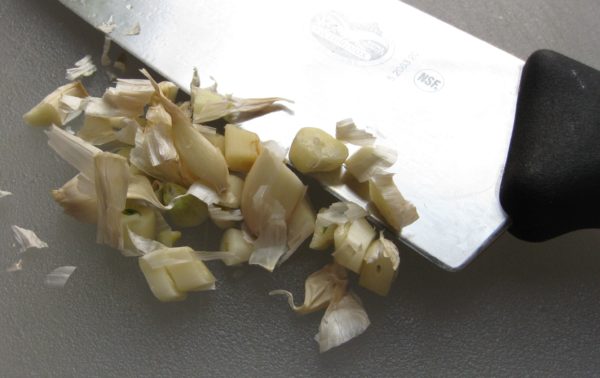
- Combine all ingredients in a large stock pot. Cover and bring to a boil. Reduce heat, and simmer, partially covered for two hours.
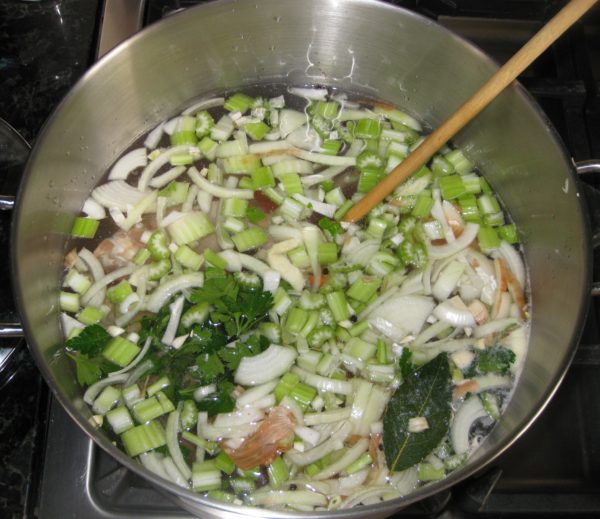
- After two hours, remove the breasts, legs, and thighs. Continue to simmer the broth.
- Remove the meat from the bones. Return the chicken bones and skin to the broth.
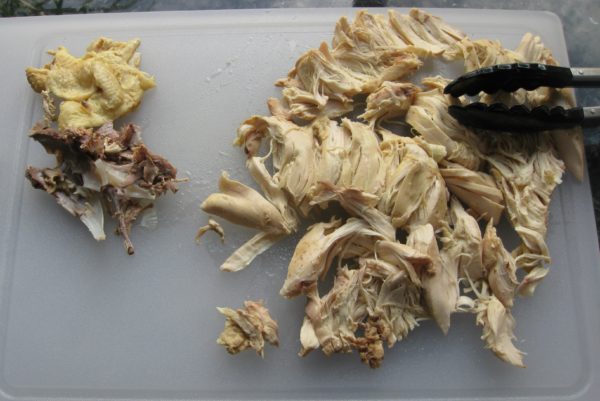
- Continue to simmer the broth for another two hours, adjusting seasoning as needed.
- Meanwhile, shred the breast meat and refrigerate.
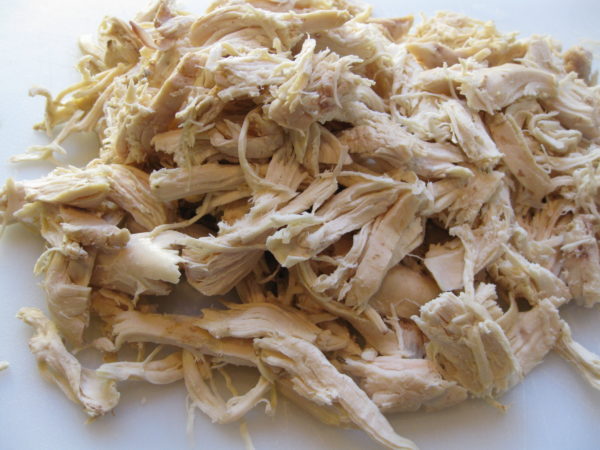
- Reserve the leg and thigh meat for another use.
- After the broth has finished cooking, cool it for several hours. Strain and discard the solids. Allow the broth to come to room temperature and refrigerate.
- Alternatively, immediately strain and discard the solids and proceed as below.
- Put all the ingredients except the bread into a mixing bowl.
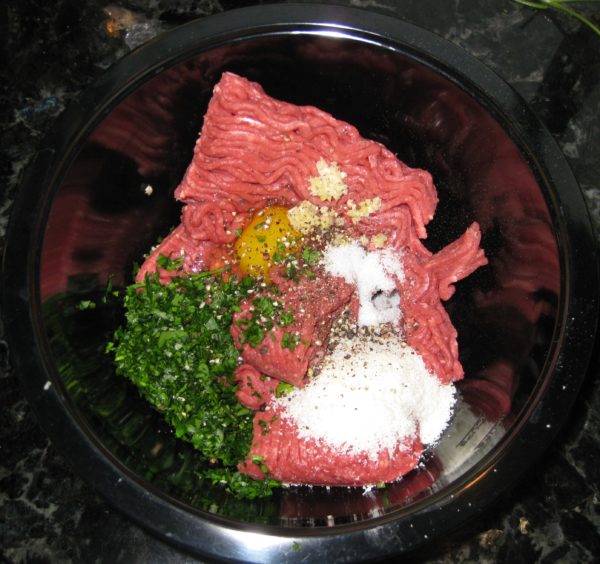
- Cut the crusts from the bread.
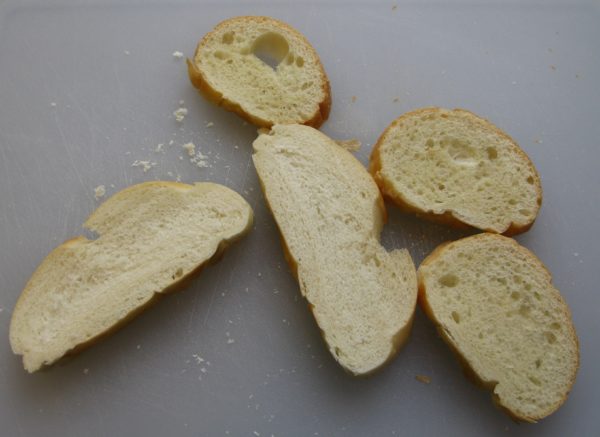
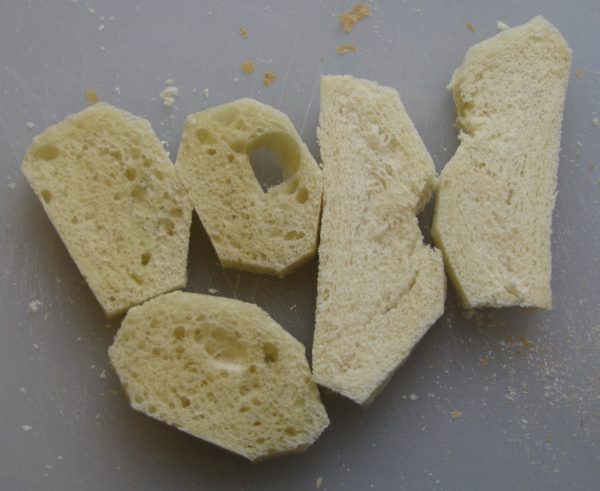
- Cover the bread with warm water for 3-4 minutes.
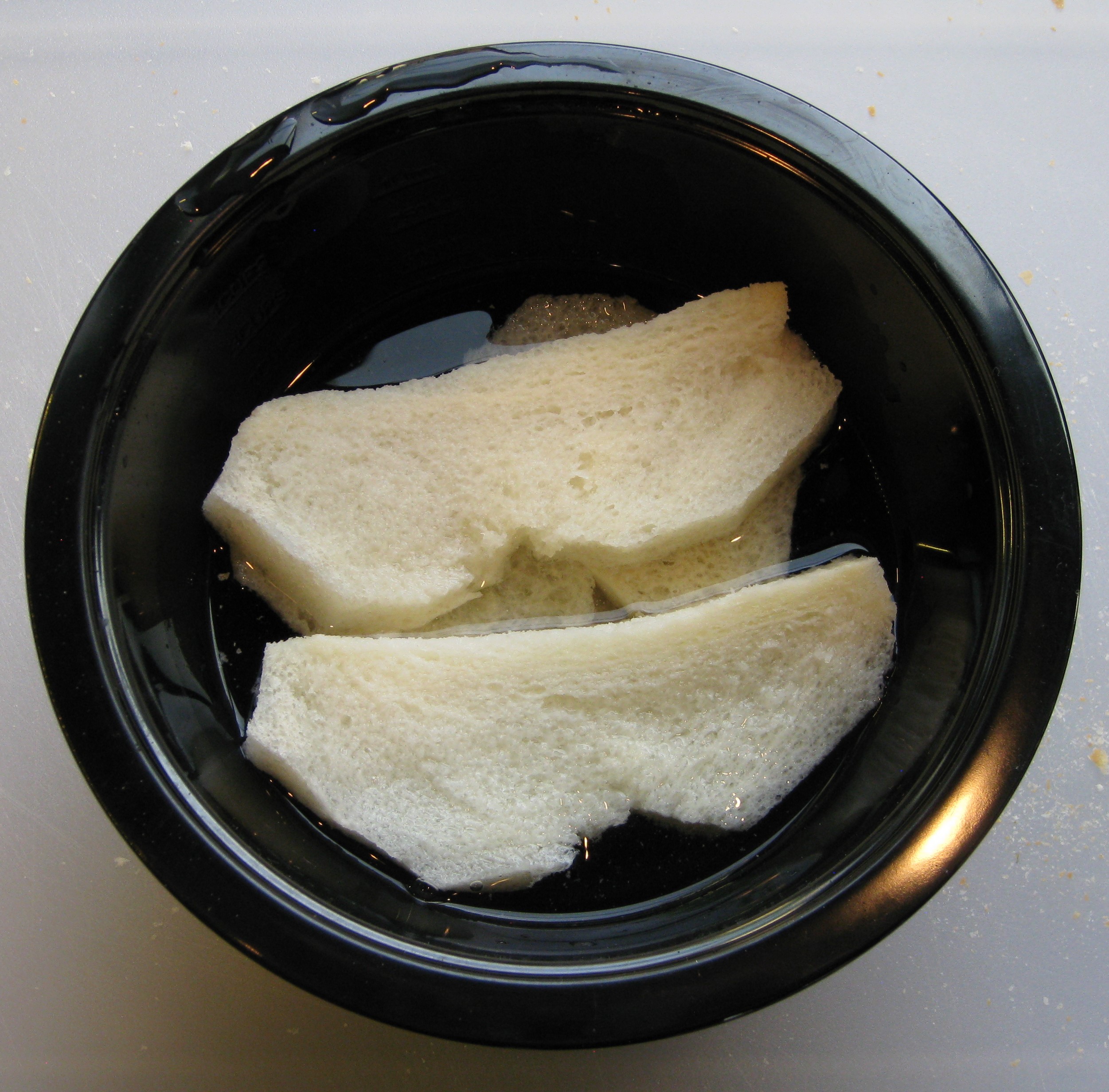
- Squeeze some of the water from the bread.
- Add the bread to the mixing bowl.
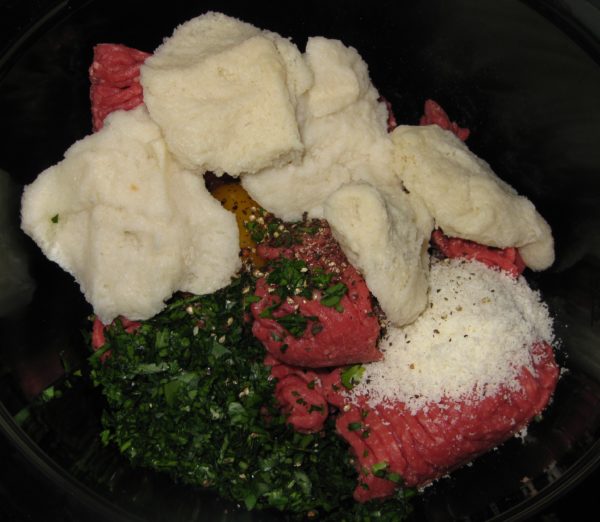
- Mix with your hands, until thoroughly combined and no streaks of white from the bread remain visible.
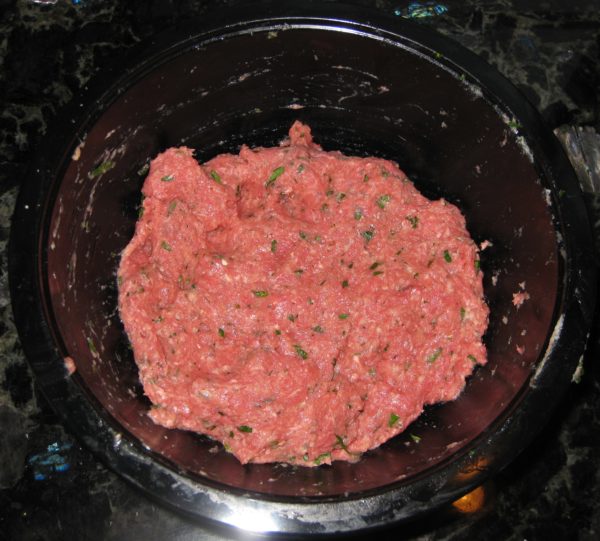
- As you are mixing add a bit of the bread soaking water from time to time (about a quarter cup or so total) to keep the mixture moist but not wet.
- The mixture should become tacky from the effects of the water and the mixing on the proteins in the meat. The tackiness will help the meatballs hold together for the same reason that sausage doesn’t fall apart when the casing is removed.
- With damp hands, roll the mixture into approximately 50 meatballs. Keeping your hands moist will enable you to create a smooth surface on the meatballs. If there are visible cracks, the meatballs will split when cooking.
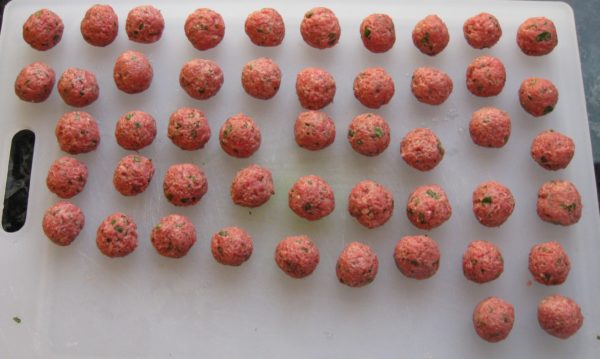
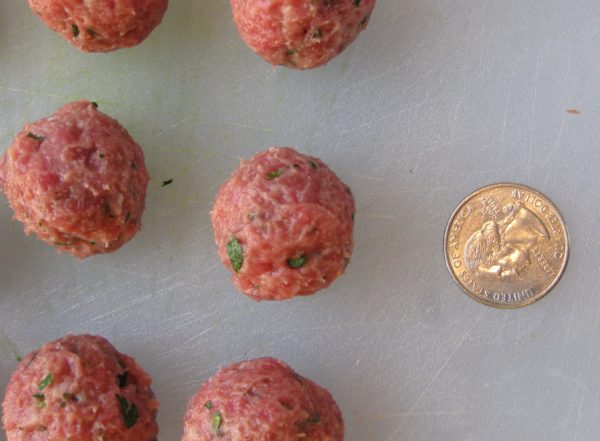
- Skim the fat from the broth. Add water to make 6 quarts of broth. Bring the broth to a boil.
- Meanwhile, coarsely chop the escarole.
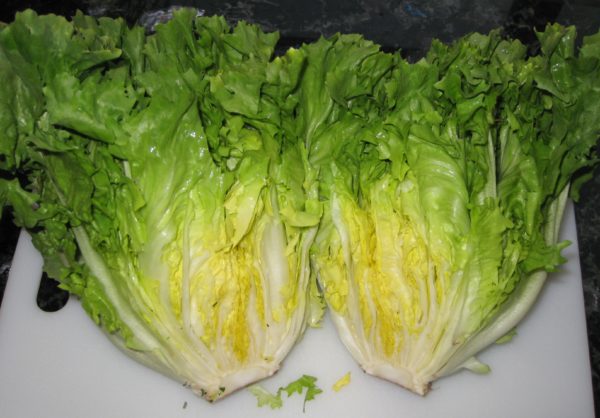
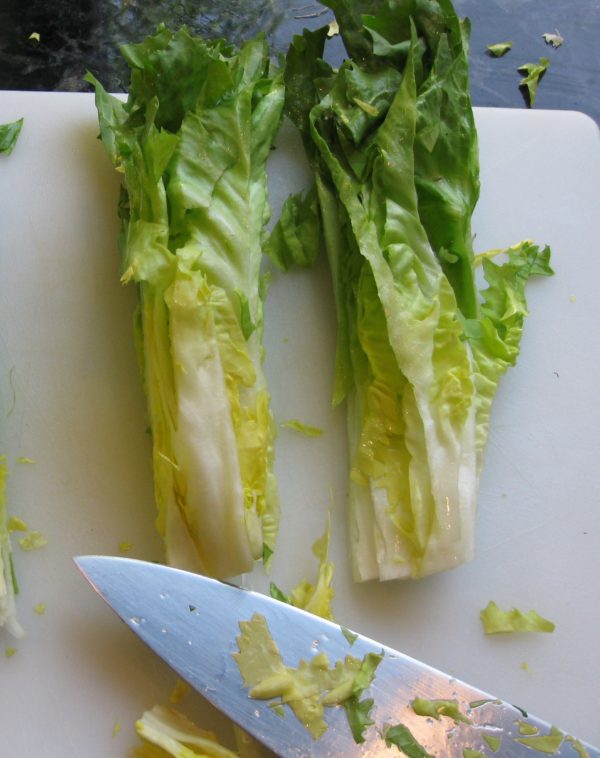
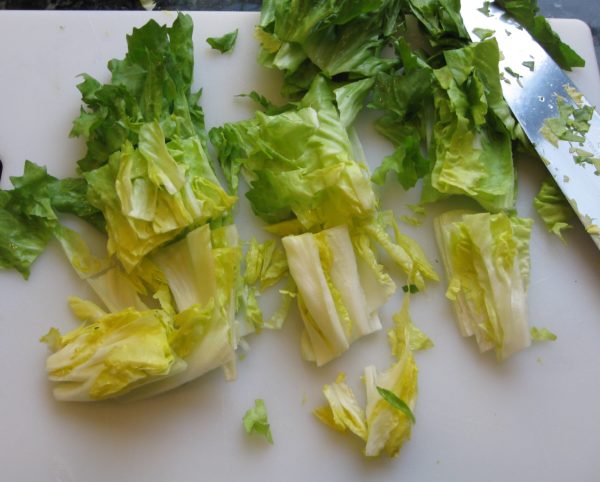
- As the broth comes to a boil, adjust the salt and pepper.
- Add the chopped escarole. Return to a boil and cook at a moderate boil for approximately 5 minutes.
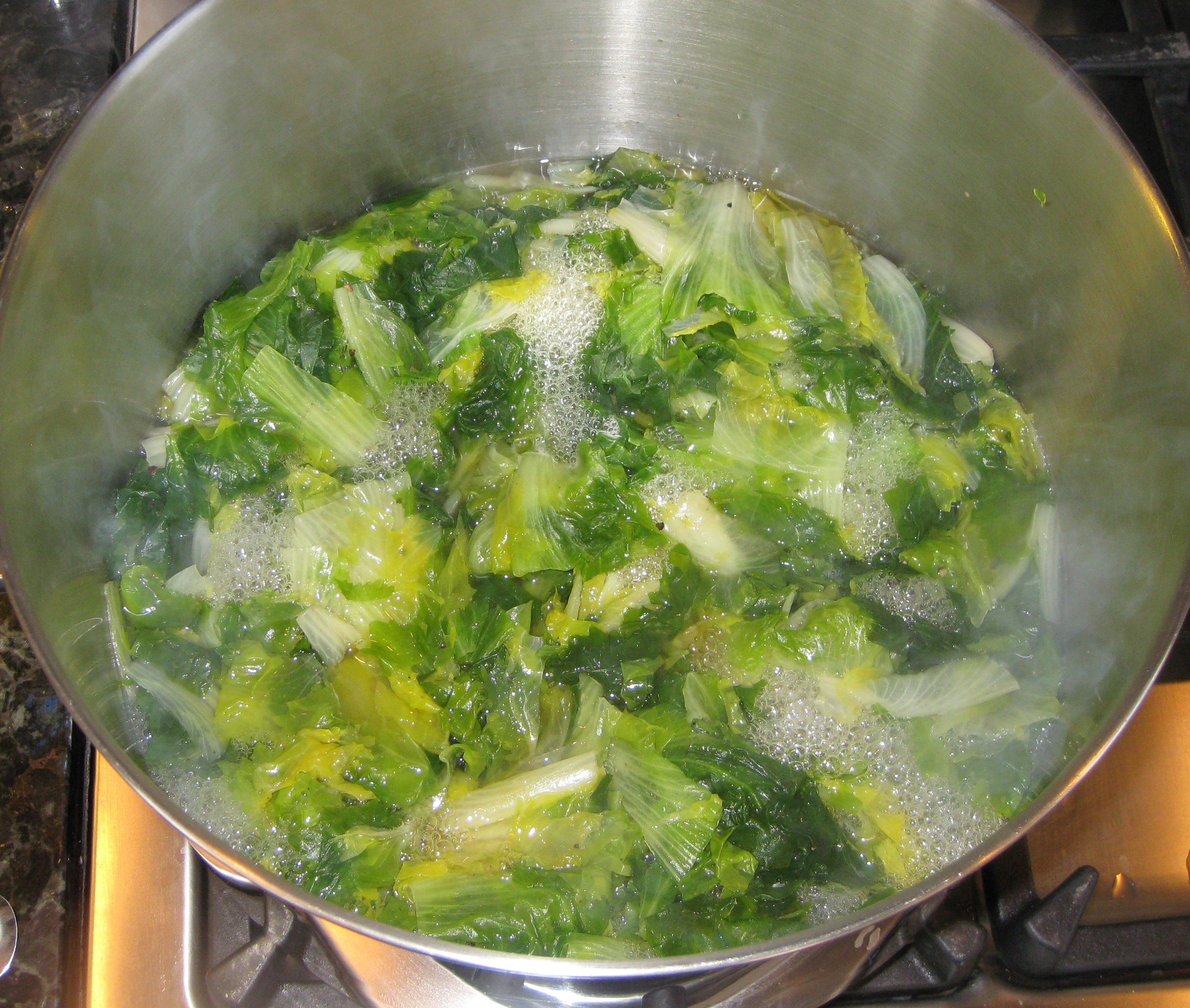
- Add the meatballs. Return to a boil and boil gently, so the meatballs don’t break, for 10-12 minutes.
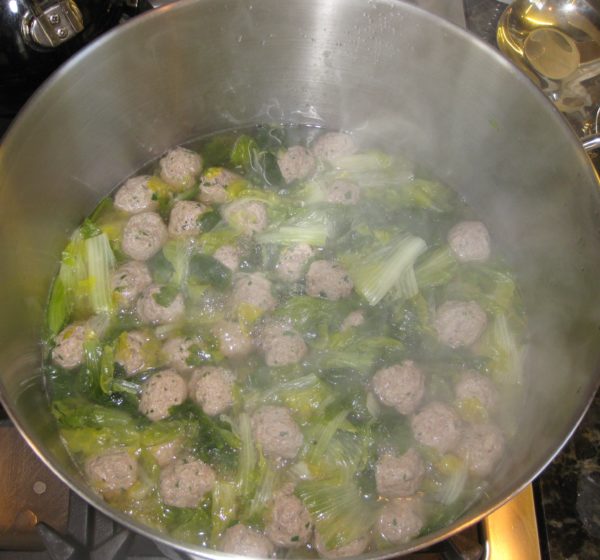
- Add the shredded white meat chicken and return to a gentle boil.
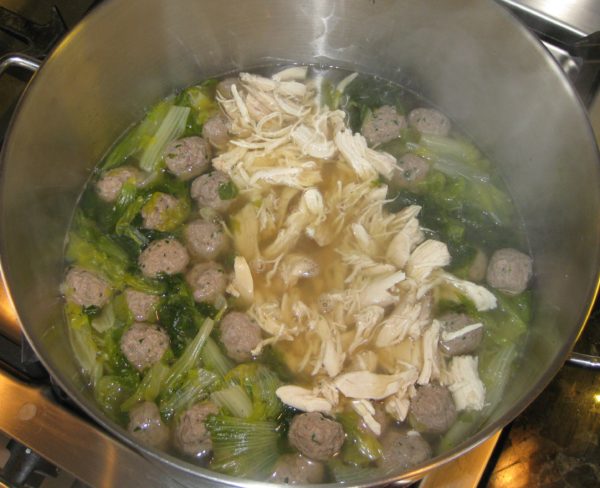
- Adjust salt and pepper. At this point, slightly over-salt the soup as the dry pasta will reduce the saltiness of the soup. The soup can be made ahead to this point. Return to a boil and add the pasta just before serving.
- Add the pasta and boil gently until pasta is cooked, approximately 10 minutes.
- Adjust salt and pepper.
- Serve with freshly grated Parmigiano Reggiano cheese.

Copyright © 2018 by VillaSentieri.com. All rights reserved.

